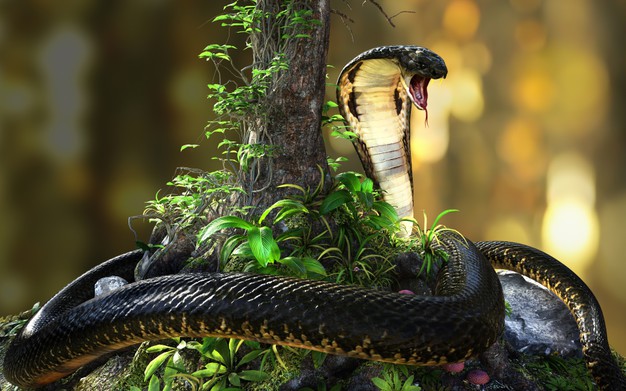
What is the difference between a snake and a serpent? The word snake refers to this type of reptile. Every snake is a snake, while every snake is not a snake. Each snake is poisonous, while the snake is non-venomous according to the type and family.
Snakes have movable fangs that flex when the mouth is closed backward, while snakes have fixed fangs.
What is the difference between a snake and a serpent?
The snake’s body is full, chunky, and short, unlike the snake’s long and thin body. Snake venom destroys the blood system, unlike snake venom, which destroys the nervous system and leads to complete paralysis of the victim.
The head of the snake is pointed and small, while the head of the snake is triangular, which can be distinguished from the rest of the body.
Characteristics of snakes
- It has a very strong sense of smell, as it can smell through its cleft tongue.
- And it has no ear or drum, and we find its eyes are always open.
- And contains a longitudinal heart and the gallbladder is not attached to the liver.
- Snakes have one longitudinal lung, stomach, pancreas, intestines, kidneys, and ureters.
- It has no limbs and its body is covered outside with fish scales, which consist of several layers.
- These layers are constantly renewed in order to protect the skin and are thicker than at the head and sides than the rest of the body. It has a spine that contains about 200 to 300 vertebrae and ribs.
Feeding snakes
- Snakes are carnivores that feed on other snakes, frogs, and fish with small mammals.
- They also eat bird eggs and kill prey in two ways.
- First is by squeezing the prey until it dies due to the stopping of its heart and then devouring it.
- The other way is to inject the prey with poison that paralyzes its movement or kills it and then eats it.
- Snakes do not chew their prey.
- But swallow it immediately, as some venomous snakes such as cobras spit their venom from a distance of six feet, and snakes can devour large prey in size.
- Due to the bones of the mouth, which are very flexible and attached to the skull.
- It can also breathe while swallowing the prey due to the trachea opening in the front of the top of the mouth.